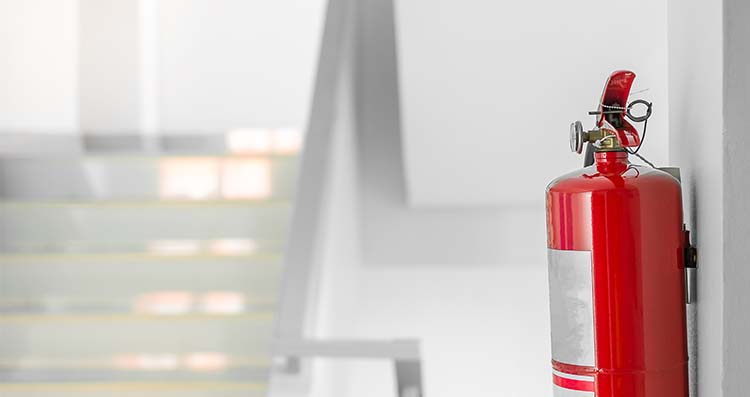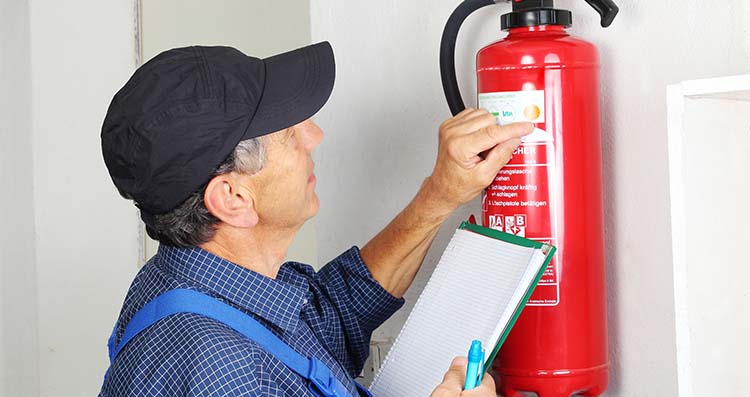Q&A – What are the technical requirements for a fire extinguisher?
Every organisation is legally obliged to install mobile fire extinguishers.
Both European and Belgian legislation sets out the regulations with which such appliances must comply. What are the legislative requirements? And what should be taken into consideration when purchasing a new fire extinguisher?
In short
Fire extinguishers that comply with the European and Belgian standards are red in colour and carry the BENOR label. Additional requirements depend on the type of appliance and extinguisher. With a targeted risk analysis, you determine what types of fire extinguishers are required in your organisation. We set out the differences and associated regulations below.
European and Belgian standards
Fire extinguishers sold or used in this country must meet both European standards alongside an additional Belgian standard (BENOR). Since the latter builds on European standards, the BENOR label is sufficient to indicate that fire extinguishers have met these standards.
Manufacturers or fitters can apply additional rules on top of the European and Belgian standards.

Type of appliance: portable or mobile?
The European standards draw a distinction between portable and mobile fire extinguishers:
- Portable fire extinguisher: this type of appliance bears the BENOR-label if it conforms with the EN3 norm.
- Mobile fire extinguisher: this type of appliance bears the BENOR-label if it conforms with the EN1866 norm.
Tip: use portable fire extinguishers primarily, and place them strategically in the building(s). This ensures you have a fire extinguisher close at hand in case of a fire.
Extinguisher type
The EN2 and EN3 standards define the various fire classes of an extinguisher and their corresponding extinguishing power. These fire classes indicate which type of fire a piece of equipment can extinguish and the indication is shown on the piece of equipment itself with the letters A, B, C, D, E or F.
A targeted risk analysis helps determine which fire classes are present in your organisation, and therefore also what type of extinguisher is most suited to extinguish a fire. For a computer that catches fire, it is best to use a different type of extinguisher than for, e.g. a burning deep fryer. Generally, organisations require at least two different types of extinguishers.
A few examples:
- ABC powder extinguisher: this extinguisher is suited to rooms in which large quantities of paper, textiles, liquids or gas are present. After extinguishing, a great deal of residual powder remains, requiring the room to be thoroughly cleaned. For this reason, do not use this type of extinguisher for electric appliances.
- Foam extinguisher: this type is generally used for offices, schools and libraries. It is important to be aware that as of 4 July 2025, a general ban on extinguishers with fluorinated firefighting foam will be in force.
- CO2 extinguishers: this type of extinguisher is most suited to rooms with a high electrical risk.
Annual check
The Codex stipulates that extinguishers must be checked annually by an authorised person. During the inspection, they will work on the basis of the manufacturer's or installer's instructions and, according to the Belgian standard (BENOR), must belong to an external company.
Besides the correct markings and types, the authorised person checks the condition of the appliance. Has the housing been damaged? Are the icons or text no longer legible? Is the handle missing? If so, the fire extinguisher no longer complies with the legal requirements and must be replaced.
The maximum shelf life of a fire extinguisher is 20 years. However, permanent-pressure fire extinguishers and CO2 extinguishers in buildings should be replaced as early as 10 years after their production date.

What about fire extinguishers for vehicles?
It is obligatory to install fire extinguishers in certain types of vehicles.
These pieces of equipment must include a BENOR-V-label. An annual check is mandatory, but does not need to be carried out by an external specialist.
The maximum permitted weight of the vehicle determines the required capacity of the extinguisher. In vehicles, people usually use powder fire extinguishers with a shelf life of up to 5 years.